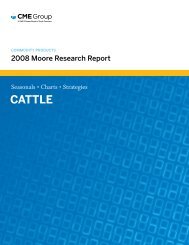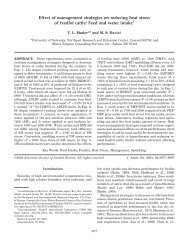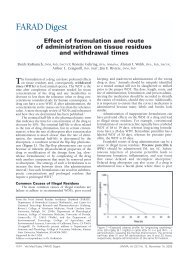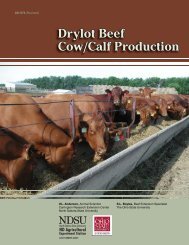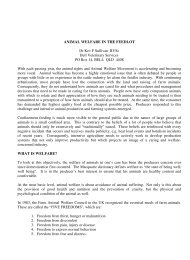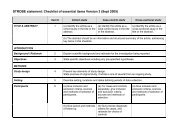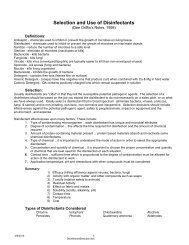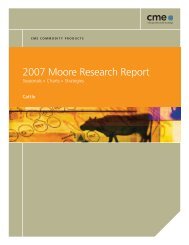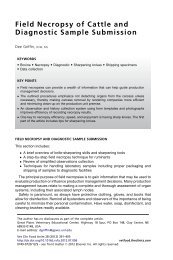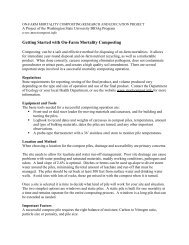CRIMES WITHOUT CONSEQUENCES - gpvec
CRIMES WITHOUT CONSEQUENCES - gpvec
CRIMES WITHOUT CONSEQUENCES - gpvec
You also want an ePaper? Increase the reach of your titles
YUMPU automatically turns print PDFs into web optimized ePapers that Google loves.
history of u.s. humane slaughter initiatives<br />
1996 Dr. Temple Grandin conducts an audit of 24 federal slaughter plants<br />
in 10 states for the USDA. She finds only 30 percent of plants able to<br />
effectively stun 95 percent or more of cattle with one shot of captive<br />
bolt gun, as required by federal humane slaughter law. 32<br />
1997 USDA Technical Services Center staff conducts an audit of humane<br />
slaughter and ante-mortem inspection procedures at 61 federal livestock<br />
slaughter plants. It finds incidents of inhumane handling at 21 percent<br />
of the plants and excessive time between stunning and bleeding at 56<br />
percent of plants. 33<br />
A judge in trial of London activists for libeling McDonald’s<br />
Corporation finds the fast food giant “culpably responsible for cruel<br />
practices in the rearing and slaughter of some of the animals which are<br />
used to produce [its] food.” The judge finds that some chickens endure<br />
rough handling before slaughter and have their throats cut while still<br />
conscious. 34<br />
Slaughterhouse: The Shocking Story of Greed, Neglect, and Inhumane<br />
Treatment Inside the U.S. Meat Industry, by humane investigator Gail<br />
Eisnitz, is published.<br />
1998 The USDA begins a 2-year phase-in of a new food safety monitoring<br />
program, Hazard Analysis Critical Control Points (HACCP). Under<br />
HACCP, the slaughter industry is given increased authority for selfoversight<br />
and procedural code for tracking humane slaughter violations<br />
is eliminated. 35<br />
Current and former USDA food safety inspectors testify at a news<br />
conference that slaughterhouses routinely ignore humane slaughter law<br />
and butcher still-conscious animals to keep production lines moving. 36<br />
Representative George E. Brown, Jr. (D-CA), sponsor of 1978<br />
legislation to strengthen enforcement of Humane Methods of Slaughter<br />
Act, sends a letter to then-USDA Secretary Dan Glickman, urging<br />
him to “take whatever actions are necessary to ensure the prompt and<br />
effective enforcement” of the law. 37<br />
32 Grandin T, Survey of stunning and handling in Federally inspected beef, veal, pork, and sheep slaughter<br />
plants, 1997. (http://www.grandin.com/survey/usdarpt.html)<br />
33 USDA-FSIS, Special survey on humane slaughter and ante-mortem inspection, March 1998. (http://www.fsis.<br />
usda.gov/oa/pubs/antemort.pdf)<br />
34 The “McLibel” verdict, which was issued in June 1997, can be accessed at http://www.mcspotlight.org/case/<br />
trial/verdict/summary.html.<br />
35 USDA-FSIS, Pathogen reduction; hazard analysis and critical control point (HACCP) systems; final rule,<br />
Federal Register [, Vol. 61, No. 144, July 25, 1996, pp. 38805-38855.<br />
36 Vorman J, USDA inspector claims cattle, pigs often brutalized, Reuters, April 2, 1998.<br />
37 Krizner K, Congressman demands enforcement of humane slaughter legislation, Daily News, April 14, 1998.<br />
23




